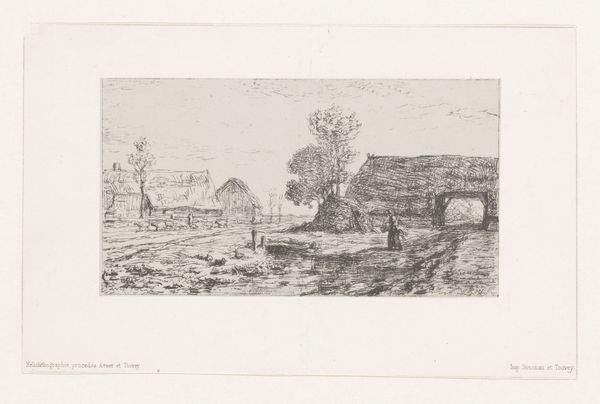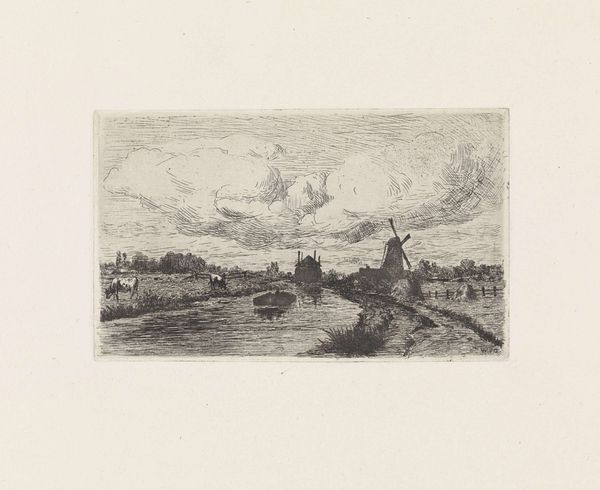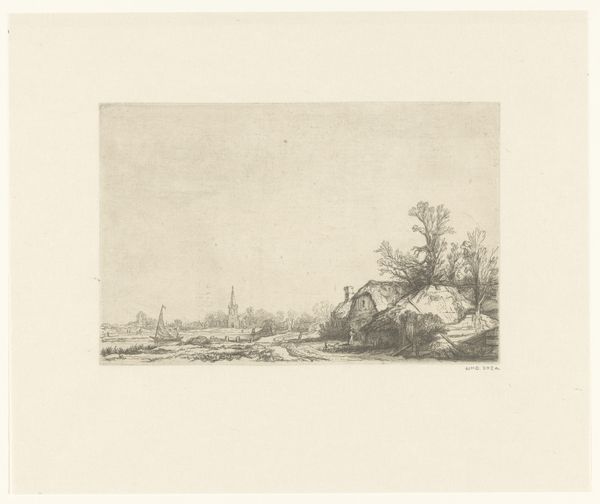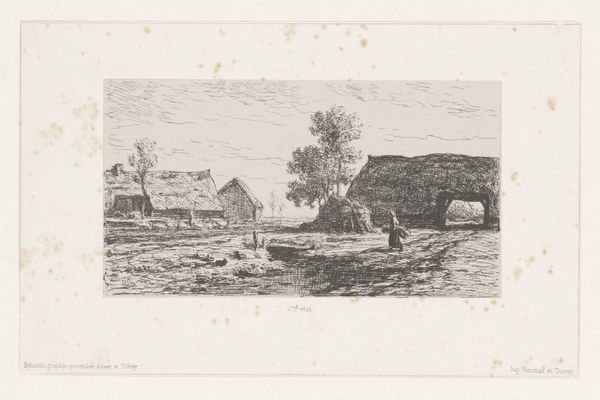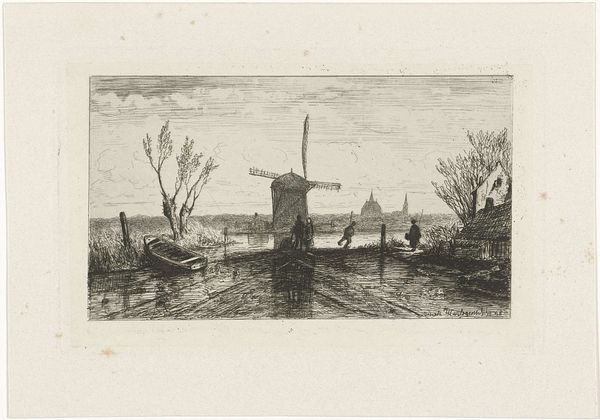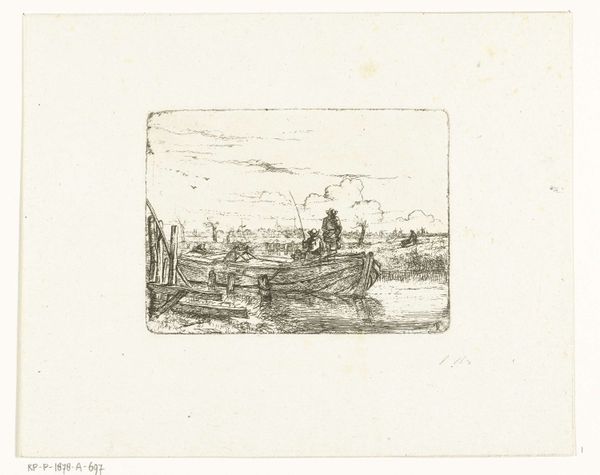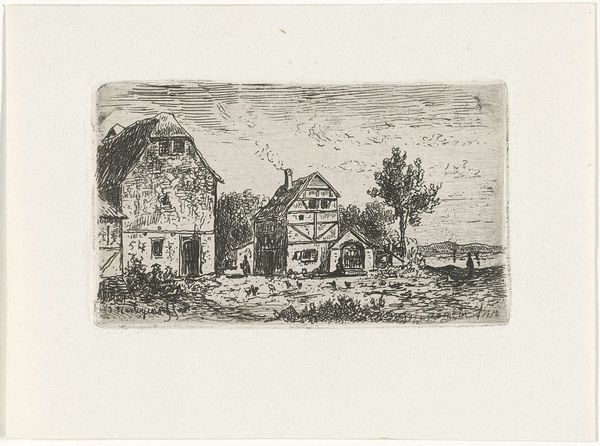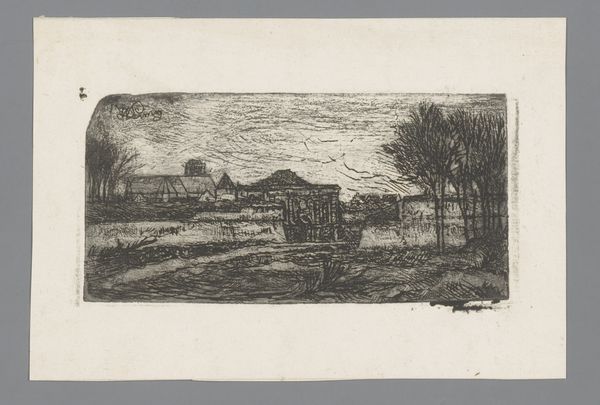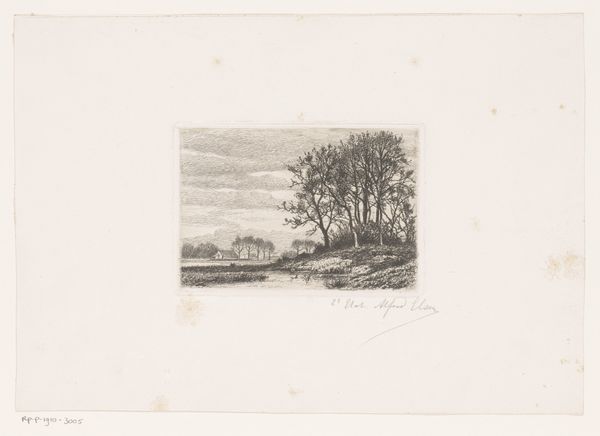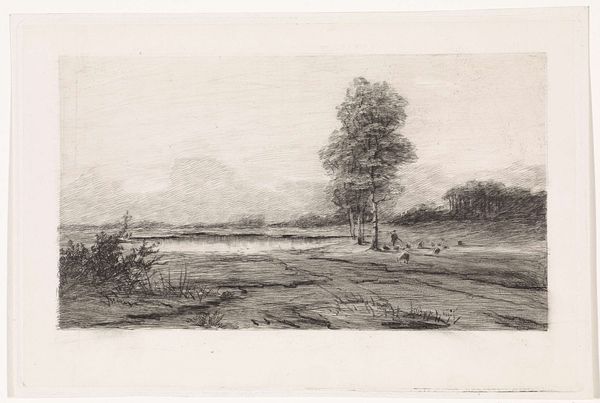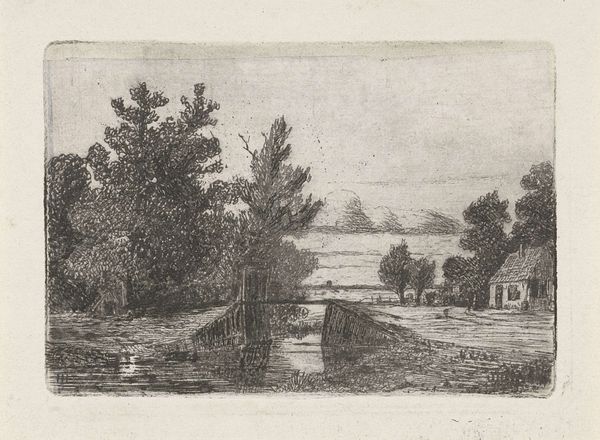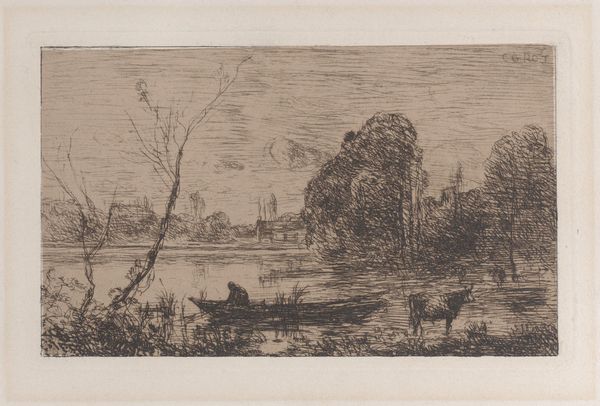
#
quirky sketch
#
pen illustration
#
pen sketch
#
old engraving style
#
etching
#
personal sketchbook
#
organic drawing style
#
ink drawing experimentation
#
pen-ink sketch
#
sketchbook drawing
Dimensions: height 71 mm, width 108 mm
Copyright: Rijks Museum: Open Domain
Curator: Welcome. Before us is “Huis aan een waterkant,” or “House on a Waterside,” created sometime between 1837 and 1865. The artist is Joseph Hartogensis, and it’s currently housed right here at the Rijksmuseum. It’s rendered with etching, displaying incredible detail despite its modest size. Editor: My first impression is one of stark beauty and quietude. The fine lines and monochromatic palette create a sort of melancholic stillness, as if time is suspended within the scene. Curator: That sense of stillness you perceive, I wonder if that feeling isn't related to the socio-economic climate of the time. The Netherlands, while experiencing some economic growth, still wrestled with stark inequalities. Artists, in turn, often captured the lives of ordinary people against a backdrop of burgeoning capitalism. Editor: That’s fascinating to consider. The symbols feel quite traditional—a quaint house, a lone tree, even a distant windmill all feel like classic emblems of the Dutch landscape, and also something more universal: perhaps a kind of personal resilience in a changing world? The reflections on the water give me an impression of something very fluid, the house sitting firmly anchored on land. Curator: I appreciate how you connected it with a changing world; because from another vantage point, that house could symbolize exclusion. For whom was this prosperity out of reach? This waterside idyll could stand in stark contrast to the realities of urbanization and social displacement many experienced. How might marginalized communities have viewed this tranquil scene? Editor: Yes, I can certainly see that tension now. It almost feels like a stage set, in which symbols become very interesting: the dark looming tree can evoke themes of shelter, yet its leafless branches can carry foreboding messages of harsh winters to come. And maybe these elements combine to symbolize that precarious balance you’re suggesting: an idyllic appearance overshadowing harsher truths. Curator: And consider how those emotional undertones also reflect debates occurring among the intellectuals of this era. From anarchist critiques to liberal reform movements, it’s intriguing how visual art engages or even refracts such dialogue. Thank you for illuminating these connections to a universal sense of quietude—it just goes to show the lasting power of socially-rooted landscapes like this one to keep provoking dialogue! Editor: It truly is captivating how an artist like Hartogensis, through skillful suggestion, captures the heart and soul of both nature and the deeper cultural narratives they're embedded in. A really resonant work, thank you for helping reveal even more profound truths that the symbolism is touching on.
Comments
No comments
Be the first to comment and join the conversation on the ultimate creative platform.
